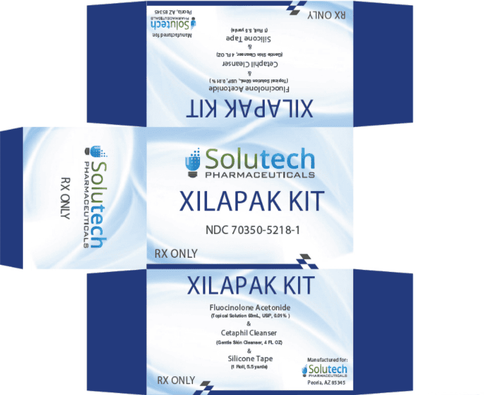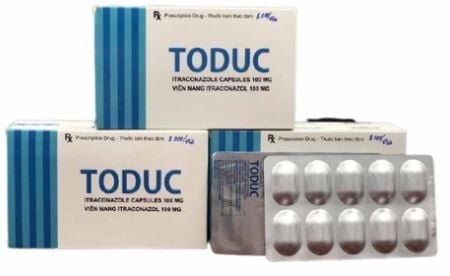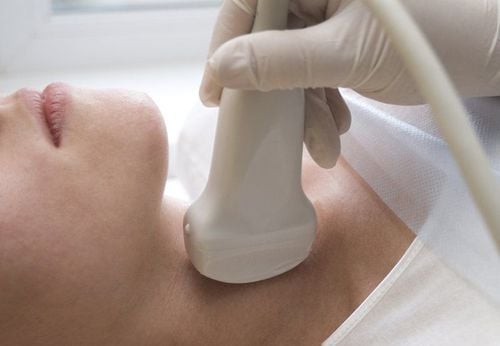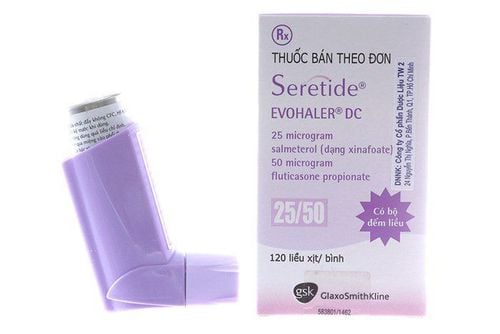This is an automatically translated article.
Cetasone 0.5mg drug is made in the form of tablets, with the main ingredient being Betamethasone 0.5mg. The drug is used in the treatment of allergies, rheumatism, collagenous system diseases, skin diseases, endocrinology,...
1. Uses of the drug Cetasone
The main ingredient of Cetasone is Betamethasone. Betamethasone is a synthetic corticosteroid with anti-inflammatory, anti-allergic and anti-rheumatic effects. The drug is used orally to treat many diseases requiring corticosteroids, except in the state of adrenal insufficiency when hydrocortisone is used with the addition of fludrocortisone. Used in high doses, Betamethasone has an immunosuppressive effect.Cetasone drug is indicated for use in the treatment of the following cases:
Rheumatic diseases: Acute and subacute bursitis, rheumatoid arthritis, acute nonspecific tendonitis, condylar epicondylitis, myositis, tendinitis, fibromyalgia, psoriatic arthritis; Diseases of the colloid system: Lupus erythematosus, systemic erythema, dermatomyositis, scleroderma; Allergic states: Seasonal or perennial allergic rhinitis, asthma attacks, chronic bronchial asthma , atopic dermatitis, severe allergic bronchitis, hypersensitivity reactions to drugs and insect bites; Skin diseases: Localized hypertrophic infiltrates of lichen planus, psoriatic rash, cutaneous lupus erythematosus, keloids, erythema multiforme (Stevens - Johnson syndrome), contact dermatitis, exfoliative dermatitis); Endocrine diseases: Congenital adrenal hyperplasia, primary or secondary adrenocortical insufficiency (used in combination with mineralocorticoids), cancer-induced hypercalcemia, non-fuss thyroiditis; Eye diseases: Inflammatory and allergic conditions of the eye, appendages such as allergic conjunctivitis, conjunctivitis, optic neuritis, disseminated posterior and choroidal choroiditis; Respiratory diseases: Pneumothorax, pulmonary fibrosis, sarcoidosis, prevention of acute respiratory failure and intracerebral hemorrhage in premature infants; Blood diseases: Idiopathic or secondary thrombocytopenia in adults, autoimmune hemolytic anemia, transfusion reaction; Gastrointestinal diseases: Colon disease, chronic autoimmune hepatitis, ulcerative colitis bleeding, exacerbation of Crohn's disease; Cancers: Temporary treatment of leukemia and lymphoma in adults, acute leukemia in children; Nephrotic syndrome: Hypoproteinuria and edema in nephrotic syndrome without uremia or due to lupus erythematosus. Contraindications to the use of Cetasone:
People with hypersensitivity to betamethasone, other corticosteroids or other components of the drug Cetasone; Diabetic, psychiatric patients; People with systemic fungal infections, bacterial and viral infections.
2. How to use and dose of Cetasone
Usage: Oral
Dosage: Depends on the age, the type of disease, the severity of the disease and the patient's response to the drug. The following regimens are commonly used:
Dosage in adults:
Short-term treatment: Take a dose of 2 - 3 mg/day for the first few days, then reduce the dose to 0.25 - 0.5 mg/day in 2 - 5 days depending on the patient's response; Rheumatoid arthritis: Use 0.5-2mg/day. For maintenance therapy, the lowest effective dose should be used. In most cases, the dose is 1.5 - 5 mg/day for 1 - 3 weeks and then reduced to the minimum effective dose; Patients with mixed connective tissue or ulcerative colitis: Larger doses may be required. Dosage in children:
Can be dosed at the same rate as adults (eg, children 12 years and older use 75% dose, children 7-11 years old use 50% dose, children 1-6 years old) taking a dose of 25%); Use in children should be limited to the smallest dose for the shortest possible duration. Overdose: When Cetasone is used in overdose (due to chronic betamethasone overdose), patients may experience sodium and water retention, increased appetite, calcium and phosphorus mobilization, and osteoporosis, hyperglycemia, and nitrogen loss. , decreased tissue regeneration, increased susceptibility to infections, increased adrenal cortex activity, adrenal insufficiency, mental and neurological disorders, muscle weakness,... In case of acute overdose, should be treated by induce vomiting and gastric lavage, monitor serum and urine electrolytes, pay attention to sodium and potassium balance. In the case of chronic toxicity, the drug should be discontinued gradually and electrolyte imbalances treated if necessary.
Missed dose: Cetasone should be taken as directed by your doctor. For long-term doses, if you miss a dose, take the next dose as soon as you remember. However, should take the medicine in the morning, in case of skipping 1 day, you should inform your doctor.
3. Side effects of the drug Cetasone
Some side effects patients may experience when using Cetasone include:
Common: Potassium loss, sodium retention, water retention, menstrual irregularities, decreased glucose tolerance, Cushing's syndrome, inhibition of growth fetal growth in utero and infancy, revealing latent diabetes, increased insulin requirements or hypoglycemia in diabetics, muscle weakness, osteoporosis, loss of muscle mass, skin and subcutaneous atrophy , sterile abscesses; Uncommon: Mood swings, insomnia, euphoria or severe depression, glaucoma, cataracts, peptic ulcer (possibly with gastric perforation and bleeding), abdominal distention, pancreatitis, esophagitis ; Rare: Urticaria, atopic dermatitis, edema, benign intracranial hypertension,... Treatment:
Most side effects of Cetasone can be reversed or minimized by dose reduction use; Taking the drug with food can reduce indigestion or irritation of the gastrointestinal tract; During prolonged treatment with betamethasone (the main ingredient of Cetasone), it may be necessary to limit sodium and supplement potassium, increase protein intake during dosing; Calcium and vitamin D should be used to reduce the risk of betamethasone-induced osteoporosis during prolonged therapy; In patients with a history or risk factors for peptic ulcers, anti-ulcer drugs should be used. If the patient is taking glucocorticoids and anemia should be related to the risk of gastric bleeding.
4. Be careful when taking Cetasone
Before and while taking Cetasone, patients should note:
Use the lowest possible dose to control the disease being treated; when reducing the dose should be gradually reduced to avoid the risk of acute adrenal insufficiency; Due to its immunosuppressive effect, the use of betamethasone at higher than necessary doses may increase susceptibility to infection. In the case of acute infections when not controlled with appropriate antibiotics, betamethasone is not indicated. The betamethasone component can mask the symptoms of infection, making it difficult to diagnose and treat; Cetasone should be used with caution in the following cases: Congestive heart failure, hypertension, new myocardial infarction, diabetes, hypothyroidism, epilepsy, glaucoma, liver failure, peptic ulcer, osteoporosis , renal failure and psychosis; When using betamethasone in children and the elderly easily increase the risk of side effects. In addition, the drug can also cause growth retardation in children; Cases where Cetasone should not be used: Patients with active TB or suspected latent TB (except in cases where drugs are used as adjuncts to anti-TB drugs); The immune response is reduced when using systemic corticosteroids, increasing the risk of chickenpox, severe Herpes zoster infection, so when using Cetasone, patients should avoid contact with the above pathogens; In case the patient does not have an immune response but is exposed to measles or chickenpox, passive immunity should be given; Do not give live vaccines to people who are receiving high-dose systemic corticosteroid therapy for at least 3 months thereafter. However, a dead vaccine or toxoid can be administered (despite reduced response); During long-term betamethasone treatment, the patient's health should be monitored, sodium intake should be reduced and potassium and calcium supplements should be added; Prolonged use of betamethasone can cause cataracts (especially in children), severe glaucoma leading to damage to the optic nerve; Cetasone should be used with caution in pregnant and lactating women (consult your doctor).
5. Cetasone drug interactions
Some drug interactions of Cetasone include:
Concomitant use of betamethasone (in high doses or long term) with paracetamol will increase the risk of hepatotoxicity. This is because betamethasone induces liver enzymes, increasing the formation of the hepatotoxic metabolite of paracetamol; Do not take tricyclic antidepressants with betamethasone because it may increase psychosis; Betamethasone can cause hyperglycaemia, so it is necessary to adjust the dose of the hypoglycemic agent after stopping betamethasone; Concomitant use of betamethasone with digitalis glycosides may increase the risk of arrhythmias or digitalis toxicity associated with hypokalemia; Concomitant use of betamethasone with phenytoin, phenobarbitone, rifampicin or ephedrine may increase the metabolism of betamethasone, reducing the therapeutic effect; Concomitant use of coumarin-type anticoagulants with betamethasone may increase or decrease the anticoagulant effect (dosage adjustment may be required); Betamethasone increases the risk of occurrence or severity of peptic ulcers, possibly increasing blood levels of salicylates; Use caution when combining betamethasone with aspirin in cases of hypoprothrombinemia; Steroids such as betamethasone may reduce the effect of anticholinesterase agents in myasthenia gravis, the effect of nonsteroidal anti-inflammatory drugs and the effect of contrast media in cholecystography; Concomitant use of betamethasone with theophylline, carbenoxolone and antifungal agents (eg, amphotericin B) may increase the risk of hypokalemia. Increased toxicity may occur if hypokalemia occurs in patients receiving cardiac glycosides; Ritonavir and oral contraceptives may increase betamethasone plasma concentrations. The effectiveness of corticosteroids may be reduced for 3 - 4 days after the patient uses mifepriston; Corticosteroids (betamethasone) can inhibit the growth-promoting effects of somatropin; Corticosteroids (betamethasone) may increase the metabolism of tretinoin, leading to a decrease in tretinoin concentrations. Above is important information about Cetasone drug, hopefully you can refer to it to get useful knowledge to help the drug use effectively and safely for the health of patients.
Please dial HOTLINE for more information or register for an appointment HERE. Download MyVinmec app to make appointments faster and to manage your bookings easily.













